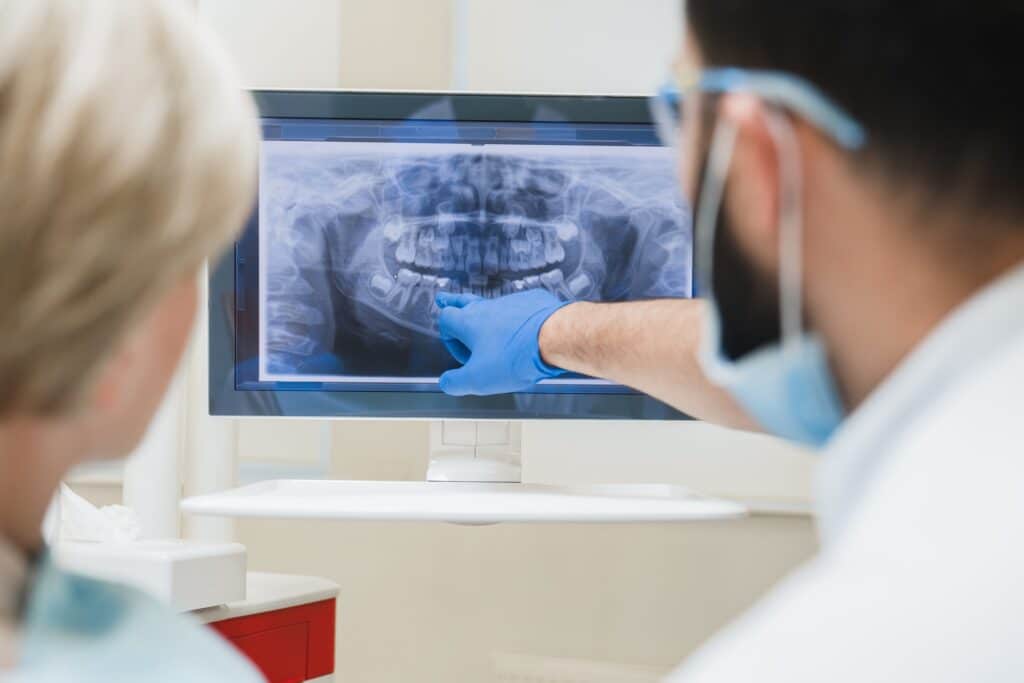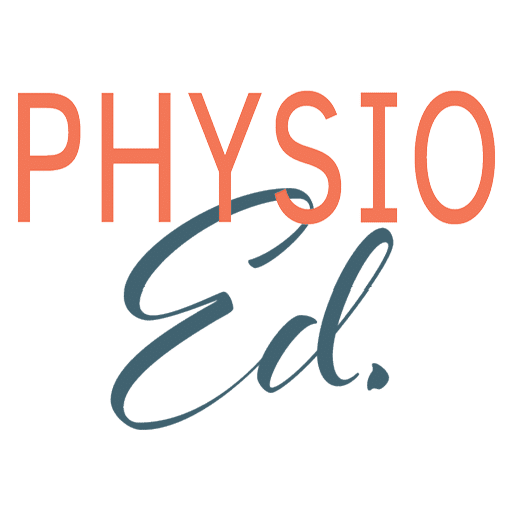Chronic pain in the jaw is widespread, especially among people over sixty-five. TMJ pain can also accompany many conditions, making it challenging to figure out the exact cause without proper screening. Fortunately there are a handful of reliable jaw exercises to relieve TMJ pain.
Performing jaw exercises can significantly impact pain for many types of jaw dysfunction regardless of age. Targeted exercises can increase strength, relax tight muscles, and decrease pain; they can even help with the annoying clicking sounds that often accompany TMJ.
Are you dealing with a temporomandibular joint disorder? Identifying the underlying causes and learning simple home treatment methods can help relieve pain.
Different Types of Jaw Pain
Pain in the jaw area (called orofacial pain) can occur for many reasons, and it is vital to figure out the precise cause of your jaw pain before beginning treatment or exercise.
Some common causes of jaw pain include:
- Recent dental work, toothache, poorly fitting dentures, or tooth infection
- Masseter pain from stress-related clenching, jaw misalignment, or teeth grinding during the day or at night
- Trauma/fracture, neuralgias, cardiac-related conditions (such as angina), or infection.
Temporomandibular joint (TMJ) problems often cause pain and soreness in other areas of the head and neck. Often, headaches, neck pain, pain while chewing, ear pain, and clicking or popping sounds when moving your jaw accompany TMJ pain.1
It’s widely believed that TMJs and TMDs (temporomandibular joint disorders) are interchangeable. However, TMD broadly refers to several conditions and structures associated with jaw joint dysfunction, while TMJ refers to the jaw joint itself.
Challenges for Older Adults with TMJ
For many seniors, aches & pains are often attributed to ‘aging.’ Similarly, orofacial conditions can cause jaw and mouth pain, but they are often overlooked or ignored in older adults.
In more severe cases, seeking medical intervention for TMJ pain might be appropriate. Older adults are often less likely to seek help due to a lack of resources or perceived barriers. They are also less likely to perform prescribed exercises to improve their jaw pain. Unfortunately, this can lead to a more chronic problem.3
Orthopedic Causes of TMJ Pain

TMD pain can arise from problems with the bone that makes up the joint, the disc that cushions the joint, or the surrounding muscles that help to open and close the jaw.
Pain in jaw muscles is often from tension-related teeth grinding or clenching due to high stress or anxiety levels.
Jaw joint disc problems are less common and tend to occur in younger people more than in older people. This category includes disc displacement or other disc disorders, which may result in a clicking or popping noise. Disc issues in the jaw can also prevent you from being able to open your mouth entirely.
Just as with any other joint, the jaw joint often experiences degeneration due to osteoarthritis and bone loss, especially in people over 65.2
Arthritic jaw pain is common, and most older jaw pain patients experience joint degeneration. It is also more common in females than males because of a post-menopausal decrease in estrogen, which is often associated with bone loss.
Other Causes and Diagnosis of TMJ Pain
For seniors, underlying medical conditions, certain medications, or general health problems with aging can complicate diagnosis.2
Most jaw pain in younger people results from dental issues or musculoskeletal impairment. Diagnosing jaw pain in older adults can be more complicated, and the diagnosis is individualized and specific to each person’s medical history.
Initially, older adults with facial pain should be screened for facial tumors since cancer is more prevalent in those over 65.
In other cases, a history of heart conditions or other cardiac problems may indicate angina as a cause of jaw pain.
If you have recently been fitted for dentures, you may be able to attribute your TMJ pain to ill-fitting dentures.
If you are experiencing a fever, redness, and swelling, an infection may be the culprit of your pain.2
Your doctor must consider your whole medical history when diagnosing your jaw pain. This careful consideration can help you find the proper treatment for relieving pain based on a specific root cause.
Our Favorite Jaw Exercises to Relieve TMJ Pain
So, how long does TMJ pain last? Does TMJ pain go away?
TMD pain is typically considered mild to moderate. Once you can identify the cause of TMJ dysfunction, simple jaw exercises can help manage pain and release jaw tension.4
Jaw Opening
- Close your mouth until your teeth touch, but don’t clench, then place your tongue on the roof of your mouth.
- Keeping your tongue pressed to the top of your mouth, slowly lower your jaw to open your mouth, Sliding your tongue toward the back of your mouth.
- Perform this movement slowly, holding the open position to feel a stretch.
Jaw Tilts
- Keeping the mouth slightly open and teeth not touching.
- With a slow, smooth motion, move your jaw left and right.
- Note: performing this movement in front of a mirror can be helpful.
Jaw Thrusts
- Push your jaw out forward, like you’re exaggerating an underbite.
- Repeat 8-10 times and rest.
Jaw Opening with Resistance
- Putting one thumb or finger an inch or so under your chin.
- Slowly open your jaw until it meets the resistance of your finger.
- Resist the opening with your finger. This resistance is like adding weights to an exercise. Hold for 5-10 seconds, then rest.
Chin Tucks
- Sitting or standing with your feet flat on the floor, push your head back and tuck your chin slightly like you’re making a double chin.
- This is a small movement—imagine you are making the back of your neck long while the front of your neck gets slightly shorter.
- Repeat for 8-10 repetitions and rest.
Other Options for Treatment of TMJ
There are many other ways to relieve jaw pain and improve joint function, and it is important to recognize factors that might contribute to your pain.
Massage
Soft tissue massage to the large masseter muscles on the side of your jaw can target and release trigger points or tiny points of tension in the muscle.
You can practice this technique on your own or with the help of a PT or massage therapist. Regular massage can enhance circulation, reduce muscle stiffness, and promote relaxation, significantly easing TMJ symptoms.
Postural Exercises
Sitting with a forward head posture can put undue pressure on the jaw and worsen TMD symptoms. Performing exercises to counter “Upper Cross Syndrome” can sometimes help to relieve TMJ jaw pain.
Correcting posture by strengthening the back and shoulder muscles and stretching the chest and neck muscles can alleviate the strain on your jaw and neck.
Thermal Therapy
Warm compress heat applied to the muscles around the joint can help to relax muscle tension if your jaw pain keeps you from sleeping or resting.
Heat therapy increases blood flow, reduces muscle spasms, and provides a soothing effect, making it easier to manage TMJ pain.
Monitoring Grinding
Having the upper and lower teeth slightly apart is considered a ‘resting’ position; avoid clenching during the day. If you grind your teeth at night, consider wearing or getting fitted for a night guard.
Monitoring and managing teeth grinding can prevent further damage to the jaw joint and muscles, reducing pain and inflammation.
Dietary Change
Eat a diet of easier-to-chew foods and avoid things like gummy candy, chewing gum, or tough meats. Incorporating softer foods can minimize jaw strain, while avoiding hard or sticky foods prevents unnecessary pressure on the jaw, allowing it to heal and reducing pain.
Medications
Non-steroidal anti-inflammatory drugs (NSAIDs) or muscle relaxers may be helpful if chronic pain becomes unbearable.
If other treatments don’t help, discuss your options with your doctor. These medications can reduce inflammation and muscle tension, providing temporary relief from TMJ pain while you work on longer-term solutions.
Key Takeaways
- Chronic jaw pain, particularly TMJ pain, is common in people over sixty-five and can be caused by various conditions.
- Jaw exercises can significantly reduce pain, increase strength, relax muscles, and address TMJ-related clicking sounds.
- Common causes of jaw pain include dental issues, stress-related clenching or grinding, trauma, and infections.
- TMJ pain can often result in headaches, neck pain, ear pain, and clicking or popping sounds when the jaw moves.
- Diagnosing jaw pain in older adults can be complex due to underlying medical conditions, medications, and general health issues.
- Effective exercises for TMJ pain relief include jaw opening, jaw tilts, jaw thrusts, jaw opening with resistance, and chin tucks.
- Additional treatment options for TMJ pain include massage, postural exercises, thermal therapy, monitoring teeth grinding, dietary changes, and medications.
- Seeking medical intervention and performing prescribed exercises can prevent jaw pain from becoming a chronic problem.
FAQs
What is TMJ pain, and why is it common in people over 65?
The term ‘TMJ pain’ refers to discomfort in the temporomandibular joint, which connects the jaw to the skull. It is common in people over 65 due to age-related factors like joint degeneration, arthritis, and decreased bone density. Chronic jaw pain can also be linked to conditions like stress-related clenching, grinding, or poorly fitting dentures.
How can jaw exercises help relieve TMJ pain?
Jaw exercises can significantly relieve TMJ pain by strengthening the jaw muscles, increasing flexibility, and reducing tension. These exercises can also address symptoms like clicking, popping sounds, and pain associated with TMJ disorders. Regular practice of targeted jaw exercises can improve overall jaw function and reduce discomfort.
What are the most effective jaw exercises for TMJ pain?
Effective jaw exercises for TMJ pain include jaw opening, jaw tilts, jaw thrusts, jaw opening with resistance, and chin tucks. These exercises focus on stretching and strengthening the jaw muscles, promoting better alignment, and relieving tension contributing to TMJ pain.
Are there other treatments for TMJ pain besides exercises?
Yes, other treatments for TMJ pain include massage, postural exercises, thermal therapy, monitoring teeth grinding, dietary changes, and medications. These additional options can help manage pain, reduce muscle tension, and improve jaw function, often complementing the benefits of jaw exercises.
When should I seek medical help for TMJ pain?
You should seek medical help for TMJ pain if the pain persists despite home treatments, if you experience severe symptoms like difficulty opening your mouth, or if there are signs of infection such as swelling, redness, or fever. Early intervention and proper diagnosis can prevent TMJ pain from becoming a chronic issue.
References
- Sandler, N. A., Ziccardi, V., & Ochs, M. (1995). Differential diagnosis of jaw pain in the elderly. Journal of the American Dental Association (1939), 126(9), 1263–1272. https://doi.org/10.14219/jada.archive.1995.0361
- Yadav, S., Yang, Y., Dutra, E. H., Robinson, J. L., & Wadhwa, S. (2018). Temporomandibular Joint Disorders in Older Adults. Journal of the American Geriatrics Society, 66(6), 1213–1217. https://doi.org/10.1111/jgs.15354
- Michelotti, A., Steenks, M. H., Farella, M., Parisini, F., Cimino, R., & Martina, R. (2004). The additional value of a home physical therapy regimen versus patient education only for the treatment of myofascial pain of the jaw muscles: short-term results of a randomized clinical trial. Journal of orofacial pain, 18(2).
- TMJ Exercises. (n.d.). Oxford University Hospitals. Retrieved February 1, 2023, from https://www.ouh.nhs.uk/patient-guide/leaflets/files/12128Ptmj.pdf








